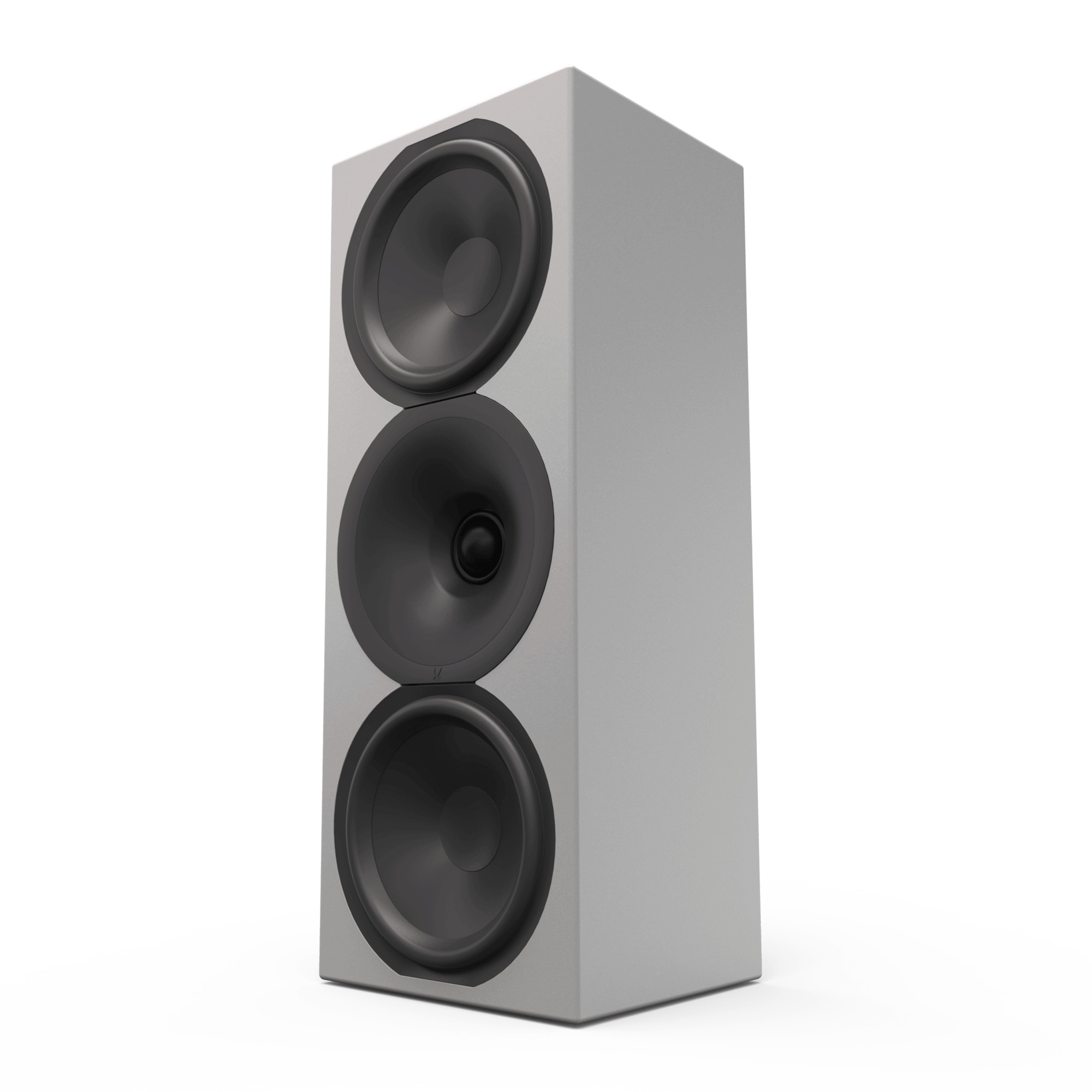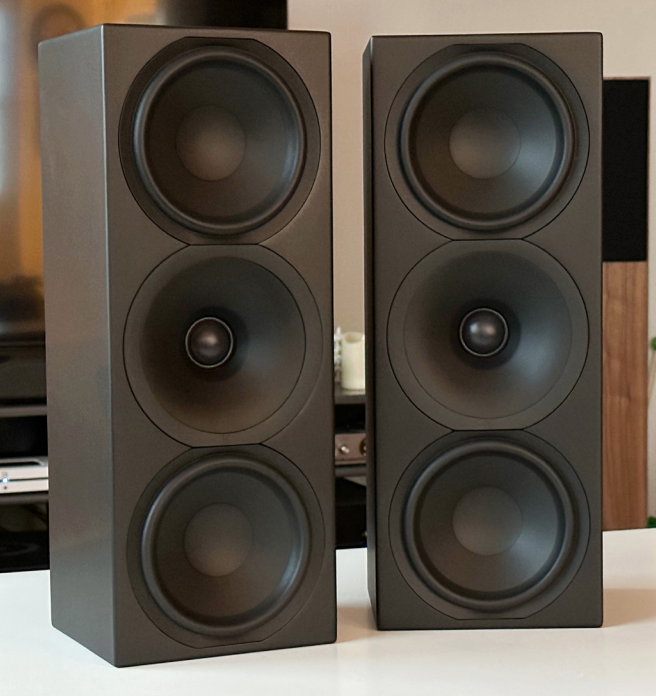Great value for money!
It’s not many years since we first heard about Arendal Sound, but in that short time, they have established an impressive production and distribution. We’ve played music on their most affordable series of Monitor speakers and are still surprised by how much bang for your buck they deliver.
We have followed Arendal Sound from the beginning and were one of the first to have their large 1723 Tower THX floor-standing speakers for a stereo test in our living room. They blew our socks off and we were almost speechless as we tried to take it all in.
For most people, Arendal Sound is best known for home theater. Perhaps their good subwoofers have received more attention than their stand, monitor, and tower speakers. However, there is all the reason to look closer at the stereo, front, and rear speakers that Arendal Sound delivers as we have done this time.
We have taken in a couple of 1961 Monitors and a 1961 subwoofer. The 1961 series has clear similarities with their original 1723 series, but some savings have been made here and there to create a budget alternative to their most expensive series. The 1961 Monitors from Arendal are quite compact.
They are 42 cm tall but only 16cm wide and easily placed 15cm deep. This allows them to be placed in a variety of places (also lying down). The limited depth makes it possible to mount the speaker on the wall if you don’t have a suitable shelf or stand to place them on.
The Monitors are not designed to play alone and do not have full response lower than about 70Hz. This is a bit tight for hi-fi use and therefore needs to be combined with a suitable subwoofer.
The cabinets for the Monitor 1961 are made of HDF (higher density than MDF), it is closed and has two 5.5-inch bass/midrange drivers. The configuration of the drivers gives the speaker an impedance of 4ohm. It’s not a problem for modern amplifiers or home theater receivers, especially when they are not playing the last octave in the bass region.
The configuration of the drivers gives the speaker an impedance of 4ohm. It’s not a problem for modern amplifiers or home theater receivers, especially when they are not playing the last octave in the bass region. The tweeter is a 28mm conventional dome that is mounted in an Arendal-characterized controlled-dispersion waveguide. The efficiency is average and specified at 87dB/1 watt, and the selected crossover frequency between the midrange and the treble is set at 1500Hz. Arendal recommends amplifiers up to 250 watts, which is quite bold considering its size and specifications. They also suggest letting the speakers play for 50 hours before they perform at their best.
1961 Subwoofer 1S
For some reason, relatively few Hi-Fi enthusiasts see the need for a subwoofer. This is a shame because a well-configured subwoofer can elevate the sound experience to new heights. Unfortunately, it can also completely destroy the experience if it’s not placed correctly, balanced properly with the main speakers, or not of good enough quality.
The latter is a bigger challenge than many think, as noise, distortion, and other sound-related unpleasantries are never stopped by the built-in crossover filter. So even if the subwoofer is set to only play from 80Hz and down, the noise is generously spread several octaves up in the frequency range. The result is that they often obscure more than they clarify, and cover up more details than they bring out.
In addition, subwoofers are notoriously difficult to place, and the following rule of thumb applies. The subwoofer will most likely not sound its best where it “fits” or looks the most pleasant. And it is a myth that some subwoofers are much easier to place than others. Some subwoofers are more flexible in terms of placement, but you won’t get just right without a measurement microphone and some patience. And some you simply won’t get right because they simply aren’t good enough. There can be many reasons, but what really kills the hi-fi experience is mechanical noise, boomy bass, lack of tightness, and high distortion.
Arendal’s subwoofers are made of HDF which has a higher density and better suppression of resonances and vibrations than normal MDF. When you play loudly, there is just as much sound on the inside of the subwoofer as on the outside, and that energy should not leak out into the environment.
The amplifier is a 550Watt (RMS) Avalanche IQ model and it drives a powerful 12.2-inch woofer down to around 20Hz and even under when you choose the EQ1 setting on the subwoofer. With a little help from the room, the pressure below 30Hz is quite formidable, and in a regular Hi-Fi setting, there is not much volume needed for the bass to be felt. Nevertheless, at normal volume levels, there is strongly limited movement in the bass element, which results in lower distortion and less mechanical noise at normal volume levels.
Connection
If you have an amplifier or receiver with room correction, this is always the best solution. A measurement microphone and a suitable program on PC/Mac is next best. The worst solution is to make adjustments by ear. The latter plus a bit of luck can of course work, but usually not. I have access to a number of measuring programs, and there are actually a few that are both free and good. A good example is the REW program that you can easily find with a quick Google search. A measurement microphone of good enough quality can be obtained for around a hundred dollars.
After some moving back and forth, the subwoofer ended up in the corner a few meters away from the satellite speakers, and with a final crossover frequency of around 120Hz, the sound was very good in my opinion. The amplifier I used was an Electrocompaniet ECi mk2, which has its own RCA/line output. With a lower crossover frequency, it is unavoidable to get the effect of the room mode at just over 70Hz, which comes from the ceiling height of 240cm. Therefore, the usual 80Hz crossover is not always the best option.
Surprisingly good sound
I have previously tested the bookshelf speakers (1961 Bookshelf) and even though it worked very well, the 1961 monitor sounds even more lively, engaging, and dynamic. In addition, the configuration of the drivers makes the perspective and holography even better. The result is that the speakers disappeared completely in the soundscape, forming an impressively large and very informative sound stage with a fantastic focus on voices and instruments. Voices are placed dead in the middle and on a perfect line between the speakers when the system is placed with care. The speakers need some space behind them for the holography to come into place, and I wonder a little about how good it will sound to have them wall mounted.
There was a little more bass against the wall, and it also got enough extra bass that you can almost use them without a subwoofer, but the speakers become more noticeable in the sound stage and the large three-dimensionality is missing. It doesn’t matter much in home cinema, but for stereo use I’m unsure. Back at a proper distance from the wall, the experience is where I want it to be. Regardless of what volume I play at, it seems like they have a dynamic reserve waiting to be used, and they are more than willing to share it with the listener. Surprisingly, they require a little power to live up to their reputation, but there were no signs that the Electrocompaniet ECi 6mkII was lacking. The amplifier is also a great choice in terms of sound quality. The little extra warmth it adds to the sound stage makes the sound rich and easy on the ears, and just relaxed enough. It’s obvious that Arendal Sound has made some compromises in the construction of these speakers, but we can report that they have managed to distribute or smooth these thinly throughout. There’s nothing that sticks out or that you can point to as an obvious deficiency, and it all seems very well-balanced and homogeneous.
Musically speaking, this 2.1 package can be used for almost anything, but it is best for rhythmic music and sounds fantastic with raw guitars, electronics, and rap. That’s where the impressive deep bass really shines and you get to flex the speakers’ dynamic muscles. With Infected Mushroom and their Heavyweight, this is incredibly entertaining, fun, and festive. A little bit into the song, you get to test how the speakers handle hard synths, heavy guitars, and heavy bass, and actually all at once. The speakers respond with an impressive stress-free audio experience and a very nice dynamic surplus.
Moving on to something completely different, the delicate and slightly difficult voice of Gregory Porter duet with Lalah Hathaway in the song Insanity. This is smooth as butter, just as it should be. Sure, it lacks the supreme resolution and nerve of my own Kerr speakers, but a look at the price tag brings any criticism to the floor.
Conclusion
Every time we test Norwegian products, we are accused of being overly positive, but could it simply be that the products made here are so well thought out and proper that they deserve all the praise they get? In Arendal’s case, there is no doubt that they stand up well against foreign competitors, although Arendal has its own twist on the 1961 series by making both the Bookshelf and Monitor dependent on a subwoofer.
If you want a pair of speakers that play deeply, high, and dynamically, a 2.1 system might be exactly what you need, as the quality and engagement this package shows easily match floor-standing speakers in a similar price range.













